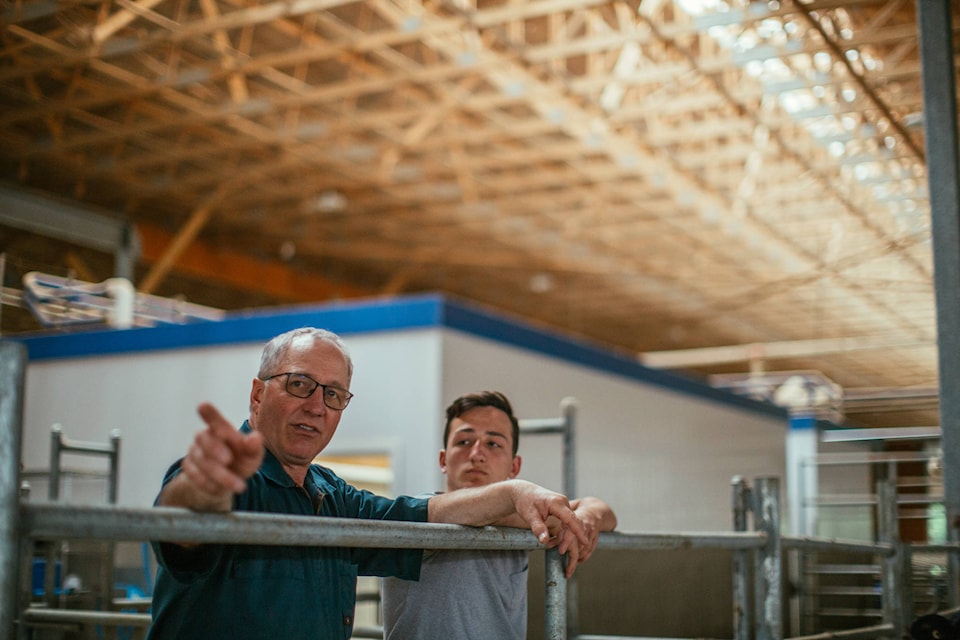When Holger Schwichtenberg’s parents purchased 150 acres of rural land near Agassiz in 1960, they put every dollar they had into creating a dairy farm. His father was a second world war refugee from East Prussia, now part of Poland, his mother from a German family where the oldest son inherited everything.
“My mom and dad left it all behind in Germany for a new beginning,” Holger remembers. “They had very little when they started out in Canada, but they had each other, and a Volkswagen Beetle. The sacrifices they made and the hard work they put into establishing our family’s farm is something I’m grateful for. That’s important to me.”
Today, Schwichtenberg works the same land with his family. The farm’s a lot different now than it was in the early years, with 157 cows milked by robots in a modern barn complete with curtain side walls that open and close to maximize fresh air and help control temperatures for the herd.
At 60, today he doesn’t spend as much time working the farm as he did as a younger man – his middle son Philip and his long-time employee Tara picking up much of the day-to-day work, his wife Catherine and sister Kerstin helping out when he’s away from the farm on volunteer work helping shape the future of dairy farming in the province. Schwichtenberg has been a Board Member of the BC Dairy Association since 2014 and Chair since late 2018. He is also involved in the Agricultural Land Commission, and was a District of Kent municipal councillor for nine years prior to that.
He can trace his passion for giving back so much to his parents, who taught him about leaving a legacy and setting an example. For a dairy farm, that example is a comprehensive one that includes stewardship of the land, fostering a positive work environment for employees, community involvement, animal health, and locally-raised food.
“Your farm environment should be about contented animals and contented employees, who are fairly compensated, well treated, and where educational opportunities are encouraged,” he says. “I want to lead by example for our three sons. You take care of the environment, you take care of people, and you take care of the cows.”
The family built a new, modern barn three years ago and installed milking robots that reduce manual labour while allowing the cows to be milked at times of their choosing. They have also planted native trees and shrubs adjacent to a slough to protect the riparian zones. The Schwichtenbergs worked with the District to install a public walking trail around the farm’s perimeter for community use, and have planted hundreds of trees on their land, an undertaking started by Holger’s father early in the farm’s history.
“This is a beautiful place to live, a great place to raise kids,” he says. “It’s a legacy mom and dad left me.”
According to a recent economic impact study, that family farm is part of a dairy industry supporting almost 12,500 jobs across BC and contributing $1.225 billion to the province’s GDP. That’s up from 11,000 jobs and just over $1 billion from a decade prior.
The study by MNP Economics and Research found the Fraser Valley remains BC’s most significant dairy production region, with 70 per cent of the industry’s 469 farms. However, the industry is active across the province, producing 840 million litres of raw milk in 2019. That’s up from 690 million litres in 2009, the increase driven by consumer demand for more dairy products.
Of that production, 42 per cent was processed and sold as fluid milk, the rest processed into other products such as cheese, yogurt, butter, and ice cream.
“Demand for a diverse array of dairy products continues to grow in BC. They are locally-produced staples in our diets, flowing from farms and processors in most corners of the province, every day,” says Schwichtenberg.
